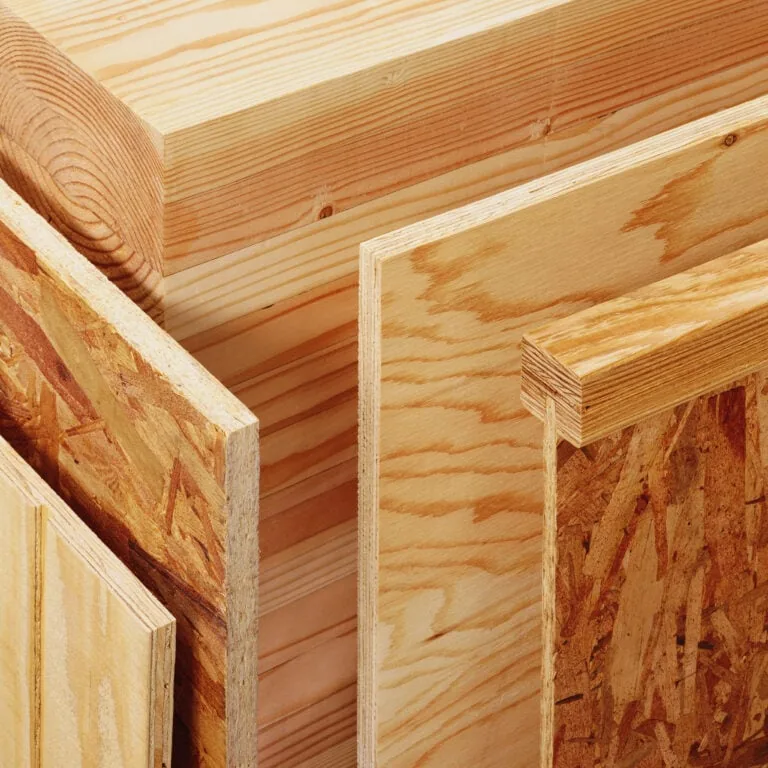Q: Why is plywood sold in odd thickness measurements like 15/32 inch instead of 1/2 inch?
A: Plywood can be divided into two different groups—sanded panels and un-sanded panels—which accounts for some of the odd size descriptions. Sanded plywood panels (used for finished applications such as cabinets and furniture) typically range in thickness from 1/4 to 1-1/4 inch. The sanded panels are manufactured to a tolerance of 1/64 inch for panels up to 3/4-in. thick (with thicker panels being +/- 3 percent of the total). The tolerance (permissible range of variation) for un-sanded plywood is 1/32 inch for panels up to 13/16-in. thick (and +/- 5 percent for thicker plywood). The reason un-sanded plywood, such as sheathing, is described as 15/32-in. thick is to reflect the manufacturer’s tolerance of 1/32 inch, even though in layman’s terms the sheet is equivalent to a 1/2-in. sheet of plywood.
Photo courtesy of APA- The Engineered Wood Association



